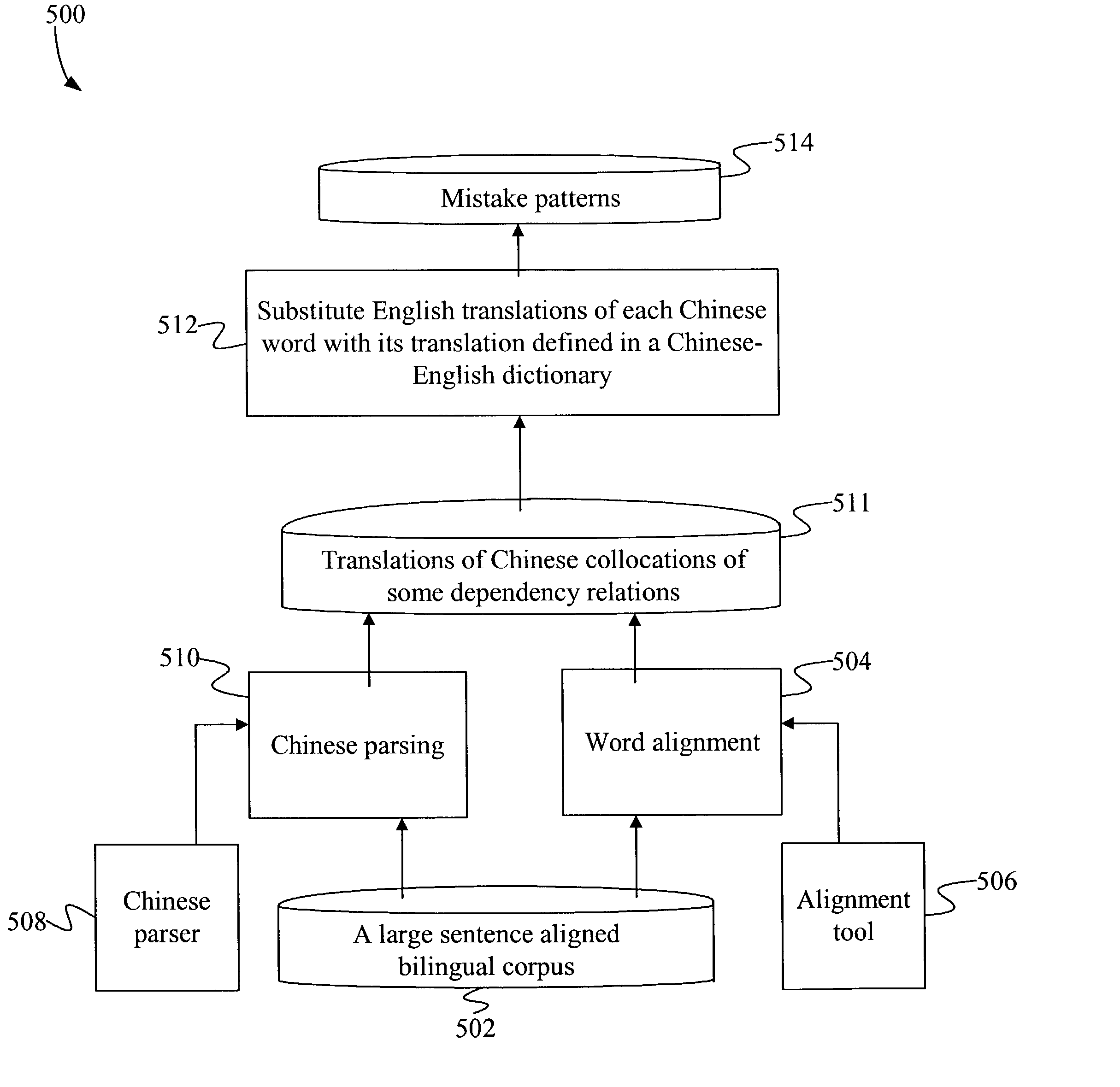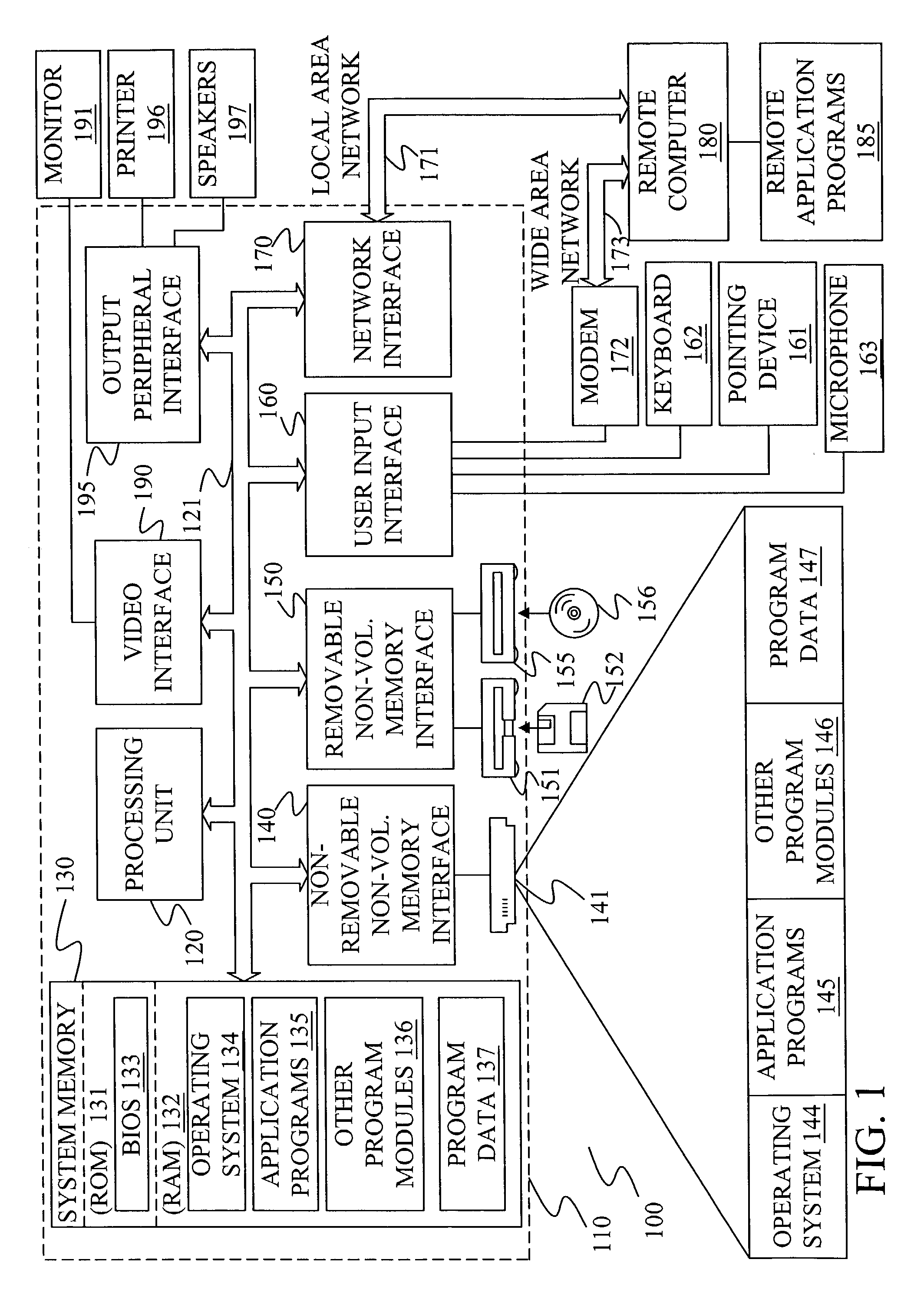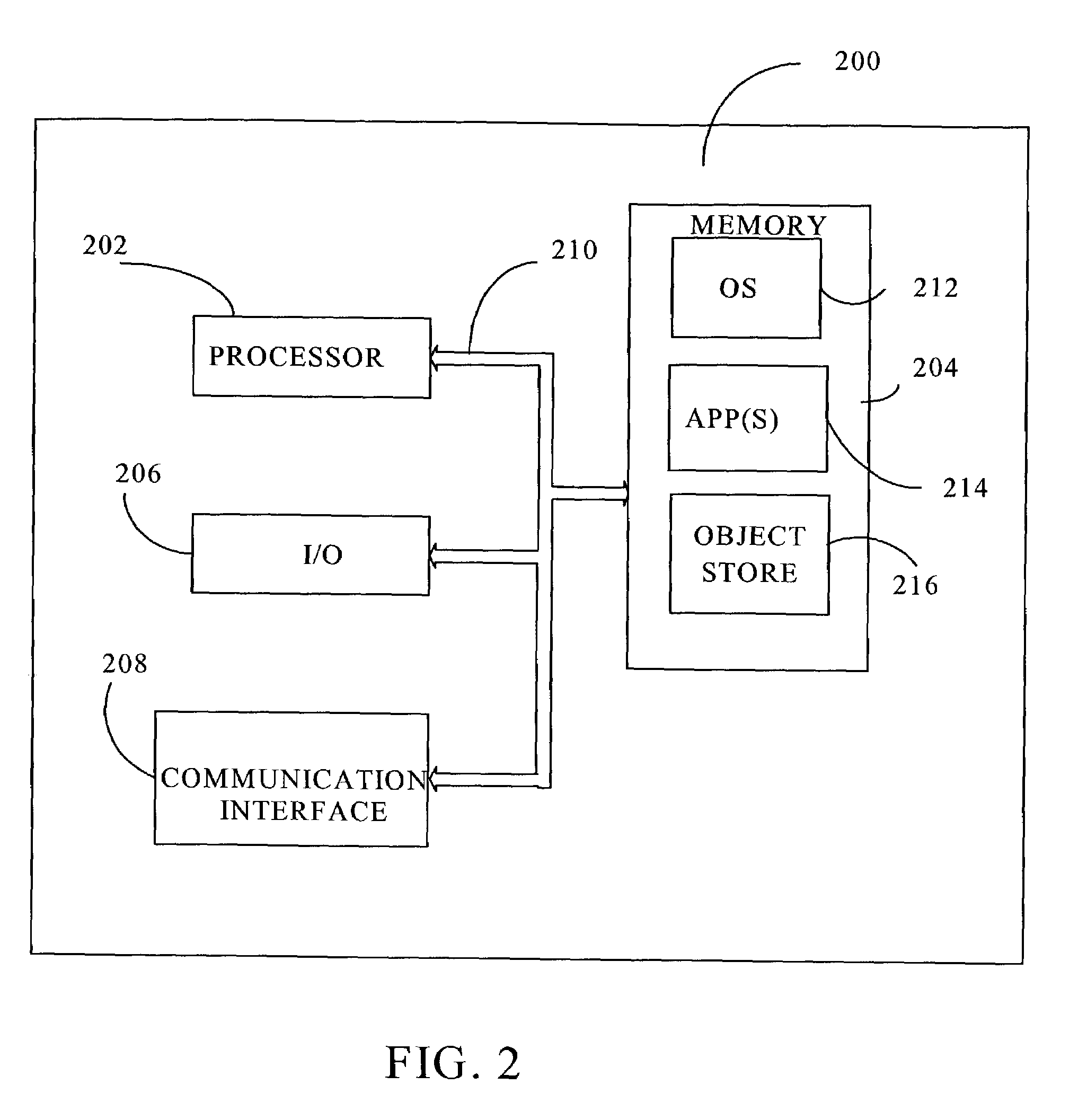System and method for automatic detection of collocation mistakes in documents
a document and automatic detection technology, applied in speech recognition, speech analysis, data processing applications, etc., can solve the problems of grammatical mistakes and improper use of collocations, and the inability to write in some non-native languages is an ever-present barrier, and achieves the effect of improving the accuracy of collocations
- Summary
- Abstract
- Description
- Claims
- Application Information
AI Technical Summary
Problems solved by technology
Method used
Image
Examples
Embodiment Construction
[0023]The invention is directed toward systems and methods which detect typical language usage mistakes frequently made by non-native speakers of the language being written in. The invention includes systems and method for constructing a collocation mistake database for use in this process. The invention is described with reference to people whose native language is not English. (Chinese, Japanese, Korean, etc.), but who are writing in English. However, the invention applies to similar problems persisting across other language boundaries. These kinds of mistakes include improper usage of collocations such as verb-object, adjective-noun, adverb-verb, etc. Unlike the spelling check and grammar check used widely in word processing systems, the present invention focuses on detection of mistakes in collocations between two words. These mistakes can be grammatical or non-grammatical.
[0024]FIG. 1 illustrates an example of a suitable computing system environment 100 on which the invention m...
PUM
 Login to View More
Login to View More Abstract
Description
Claims
Application Information
 Login to View More
Login to View More - R&D
- Intellectual Property
- Life Sciences
- Materials
- Tech Scout
- Unparalleled Data Quality
- Higher Quality Content
- 60% Fewer Hallucinations
Browse by: Latest US Patents, China's latest patents, Technical Efficacy Thesaurus, Application Domain, Technology Topic, Popular Technical Reports.
© 2025 PatSnap. All rights reserved.Legal|Privacy policy|Modern Slavery Act Transparency Statement|Sitemap|About US| Contact US: help@patsnap.com



